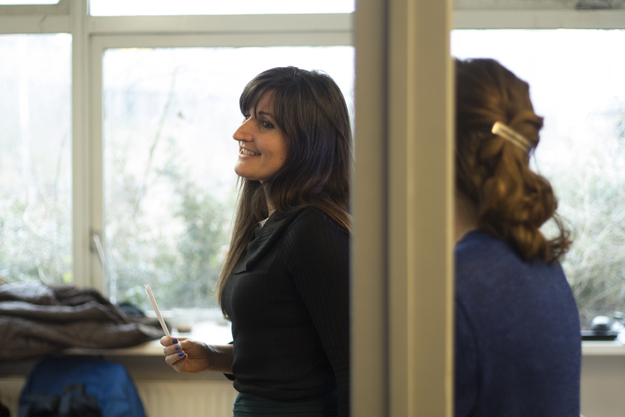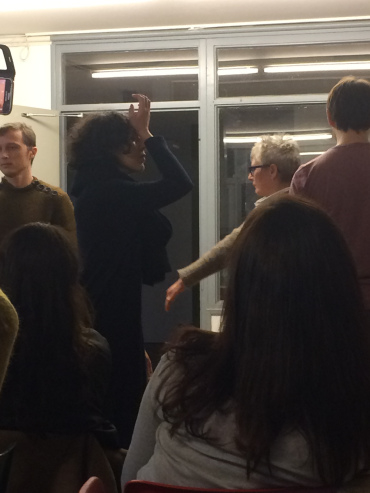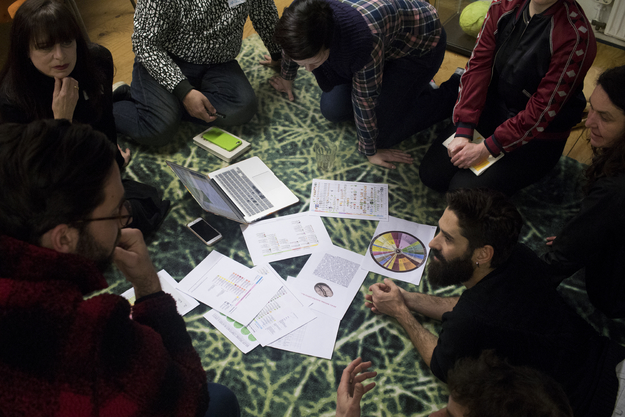Scents in Literature
In fin-de-siecle poetry one can find many descriptions of scents in flux or movement. For example in Comtesse de Noaille’s poems:
“Sur ta chair le parfum rôde
Comme autour d’un encensoir”
This roughly translates as: “On your body, perfumes rise, like around an incense burner”
Robert de Monstesquiou – also known as Professeur de Beauté – described a scent impression in a similar manner
“N’ oublions pas la suave invocation des parfums,
dont les moites brumes, les bleuissantes
spirales, s’ etirent et se bouclent au-dessus de la
priere pour tous”
Montesquiou speaks of ‘spiraling’ scents that expand and lift up, like a fragrant prayer. These movements definitely enhance the bodily and sensual, even erotic, aspects of scent experiences through words. The authors seem to describe the fumes of odorants that are diffused ‘per fumum’, meaning, through smoke, in a time when incense burners were still very common. Smoke of course rises, changes, expands, and moves in spirals toward the sky (which made ancient people believe it was an excellent means to communicate to the gods).
The Futurists are the only artists I came across that kept using movement-terms to put their finger on the fleeting and ephemeral nature of scents, when incense burners had already become somewhat out of fashion.
In ‘Ritratto olfattivo di una donna’ (1932, ‘Olfactory portrait of a woman’) F.T. Marinetti narrated his frantic search for a woman in a modern city, filled with the fumes of carbon, smoke and fire. But he catches a whiff of her nevertheless. ‘Do not look at her, sniff her’, he wrote in uppercase, as if he tried to educate the nostrils of his readership.
And then one of the most poetic yet concrete description of all the smell trails (sillage) one person could possibly ‘produce’ followed:
“AND SHE
this soft
most agile egg shaped
volume of fresh red perfumes
with on top
3 6 nine spirals of scents of vanilla”
“To the left and to the right globally on the head
moving arches of odor
milky and most fresh
of acacia”
I could go one like this even longer. But I won’t. It just made me wonder: Isn’t movement an excellent and realistic way to describe scent impressions? Don’t scents always leave an invisible yet dynamic trail? If we could visualize the behavior of odorants, it would be a ballet of appearing and dissolving shapes. Volatile citric notes would move in a fast and upward manner. Heavy basenotes would linger longer and lower to the floor.
Caro Verbeek in Communication Scents: Hackathon -

Hackathon Results
During the scent hackaton at Mediamatic, organized by Saskia Wilson Brown (Institute of Art & Olfaction) and Klara Ravat (Smell Lab), (and just a little help from me) the audience (odience…) was asked to describe 25 hard to classify scents, kindly provided by IFF. After about 12 rounds of labelling them (in which almost everyone kept mentioning sources or memories), we decided to turn to cross-modality and synesthetic language.
Something incredibly interesting started happening when we asked people to express the scents through gestures, shapes and movements.
People didn’t hesitate to make the most expressionistic movements with their fingers, hands, arms and sometimes even entire bodies. Although sometimes there seemed to be a bit of consensus (very horizontally oriented movements, or very firm, or more ethereal gestures), most of the time there wasn’t. But should this really matter? Smells and experience are very closely related. Kant deemed smells unaesthetic because he was convinced it was impossible to ponder on their nature (just on the subjective experience they trigger). I personally feel it is more interesting to study and describe the personal reaction to smell than its static ‘objective’ nature. At least that way we can express to others what goes on inside our brains and bodies when we try to classify the hardly classifiable.
At the end of the two days four participants engaged in a dance in order to communicate a smell in a non-traditional way. They each expressed one ingredient of the perfume they made from the IFF materials. It was silent, yet it spoke a thousand words, and those present were observing in absolute silence (even though we were quite noisy the rest of the time).
One dancer made very outward movements, another one more inward. Someone hugged herself (base note?), another one raised his arms to the sky (top note?). After a few minutes their movements started to synchronize and they walked in a circle. They now embodied the perfume they made as a synthesis. I had no idea what it was supposed to smell like just by looking. But I was ‘moved’, while sitting there quietly and immobile. Movement enables us to express an emotion. In fact, a whole set of emotions. Because that is what perfumes do. They tell an entire story.
the dance was performed by
Boris Raux/ Anna d’Errico/ Sonja Tobé/ Nenad Popov
Guests performing a dance to describe scents during the Hackathon -

You can read more on the history and discussions of olfactory culture in Caro's website, Futurist Scents here and more about Caro Verbeek's works here.
